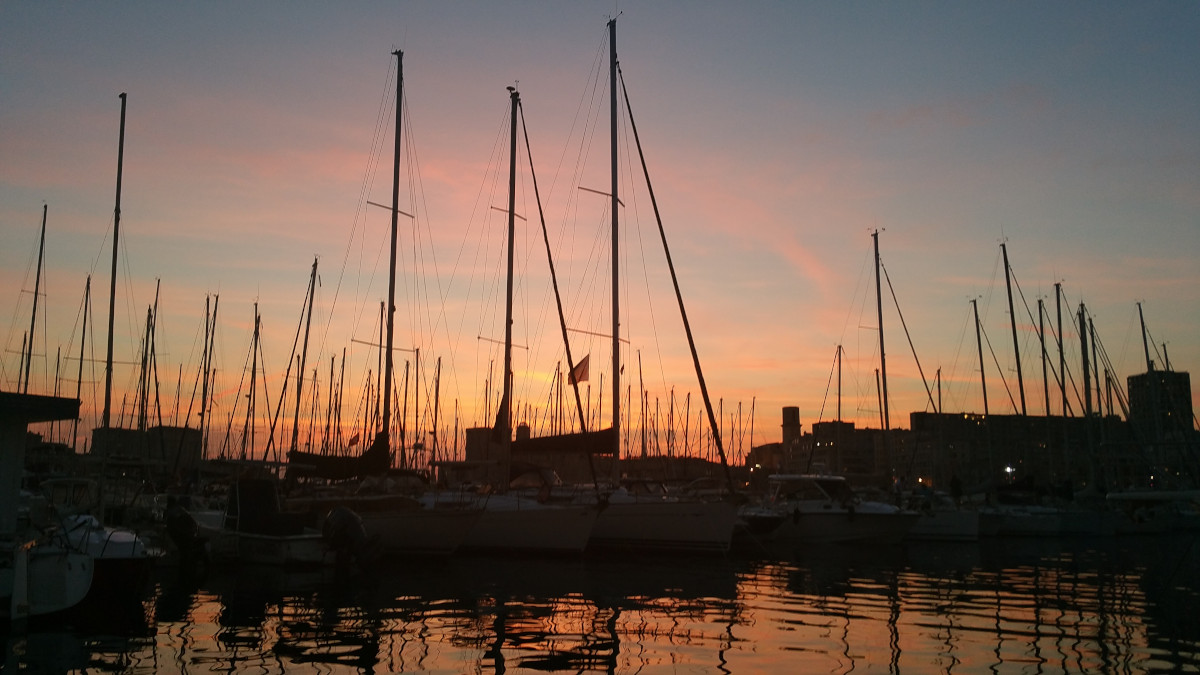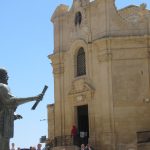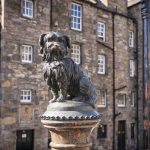This episode centres on Marseille’s most popular sights, the Old Port, the hilltop church of Notre Dame de la Garde, and the Canebière, the wide avenue leading back from the port into the heart of the city. After some snippets of history, we tour such sights as the fish market, the iconic canopy built to mark Marseille’s year as a City of European Culture in 2013, an ancient tower and a surprising link to Odessa in Ukraine. We might take the little ferry across the harbour, we’ll certainly walk – or maybe take the ‘petit train’ – up the hill to Notre Dame de la Garde, where a huge golden statue of Mary the Virgin watches protectively over the city.
The Old Port: A little history
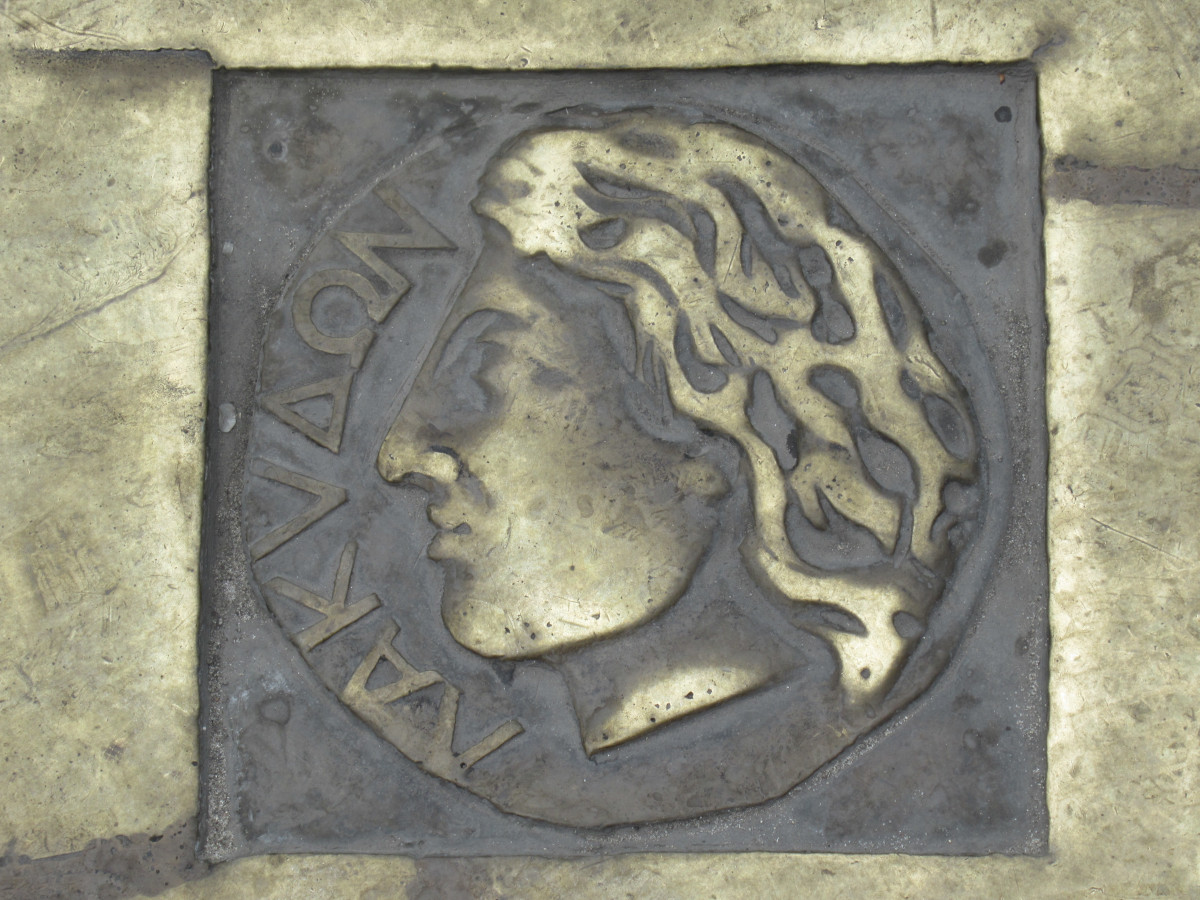
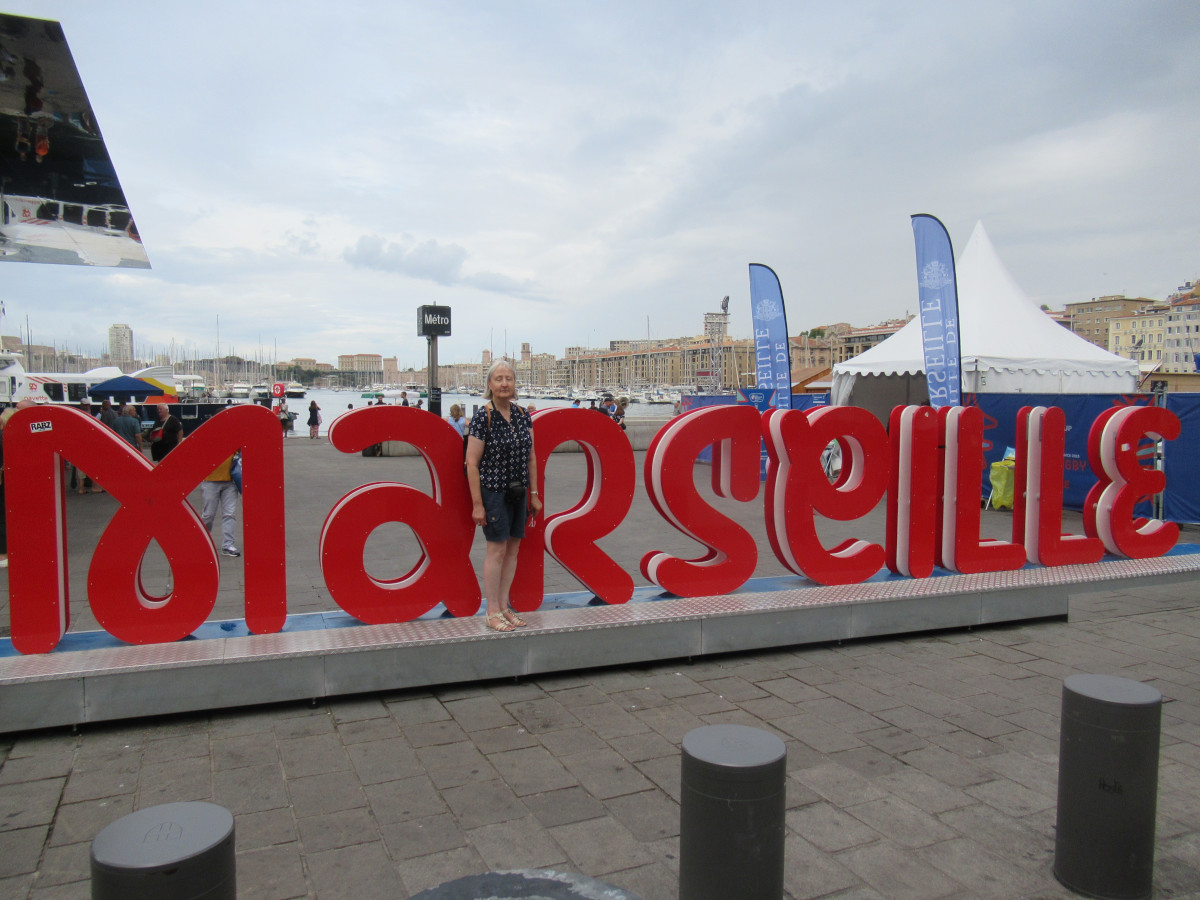
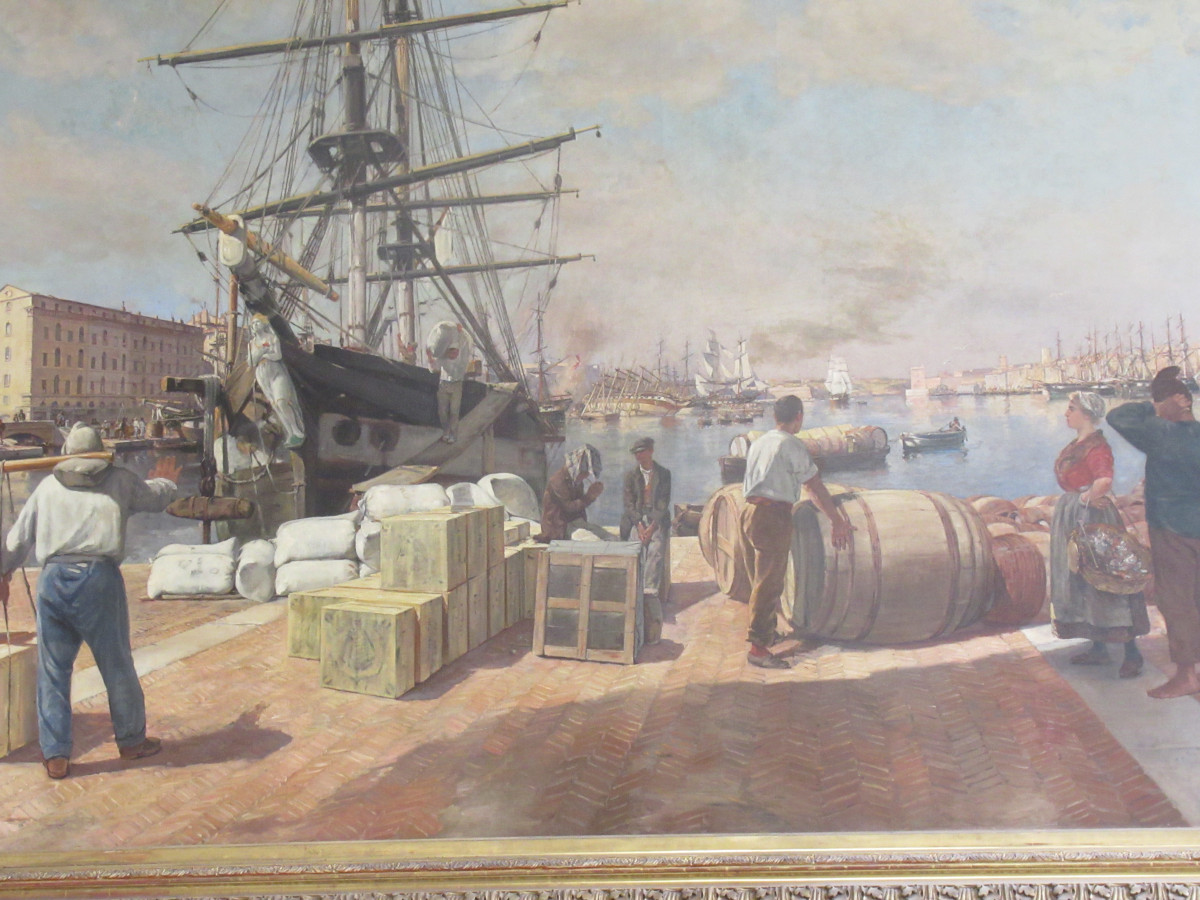
Marseille’s harbour has seen so many important moments of history, from the arrival of the Greeks 26 centuries ago, to the night in 1423 when Spanish invaders broke through the chain protecting the port and took it back to Valencia, where you can still see it today in the cathedral. In1720, it was a different enemy – the plague – which entered the city via its port, after local merchants ignored the quarantine rules and allowed the Grand Saint Antoine, arriving from Lebanon, to dock and unload its valuable cargo. 50,000 Marseille citizens fell sick and died in this last major European outbreak of bubonic plague. This story is told more fully on the podcast.
By the 19th century, Marseille was a hugely important trading centre. The author Alphonse Daudet gave a good idea of the vast array of goods arriving here when he wrote of ‘a prodigious mass of goods of all kinds; silks, minerals, planks of timber, lead ingots, linens, sugars, carobs, rapeseeds, liquorice, sugar canes. The Orient and the Occident are jumbled together.’
Visiting the Old Port Today
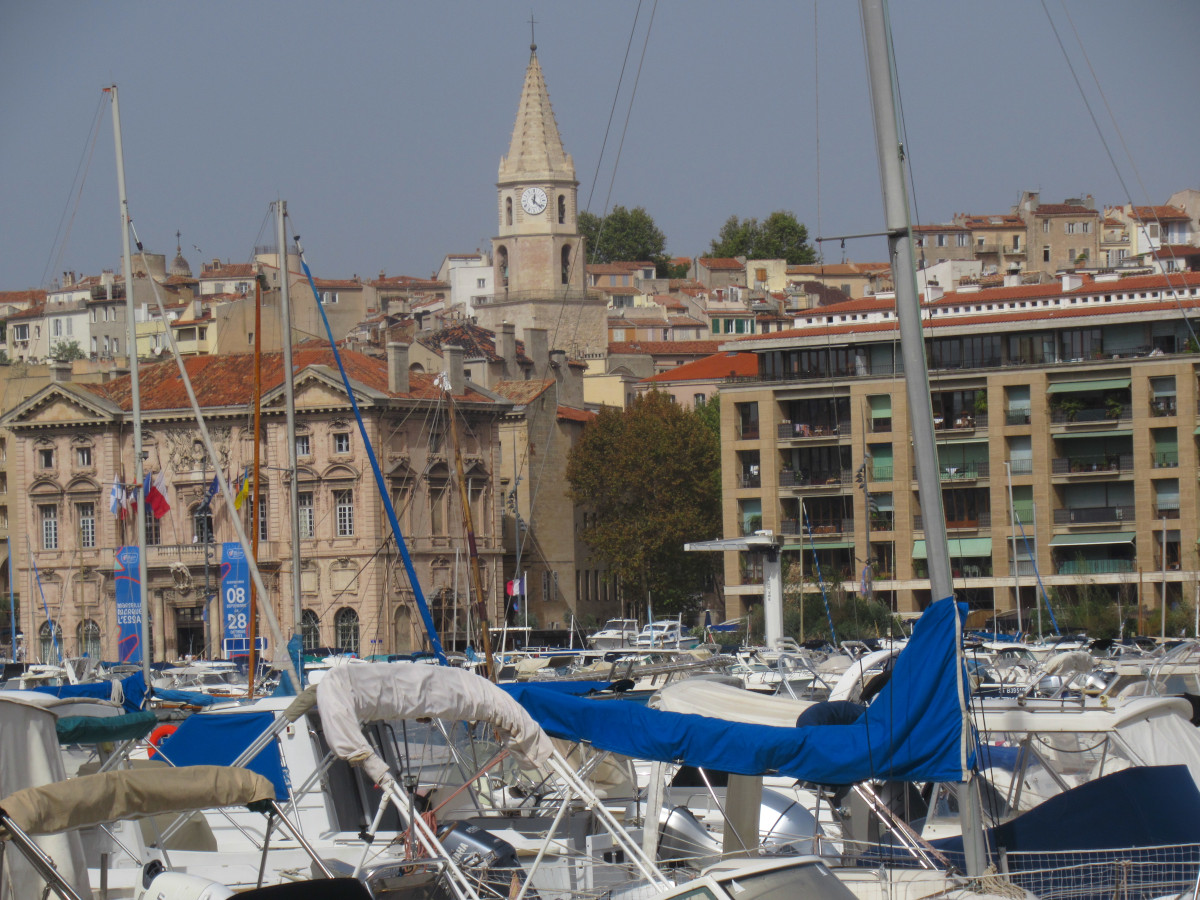
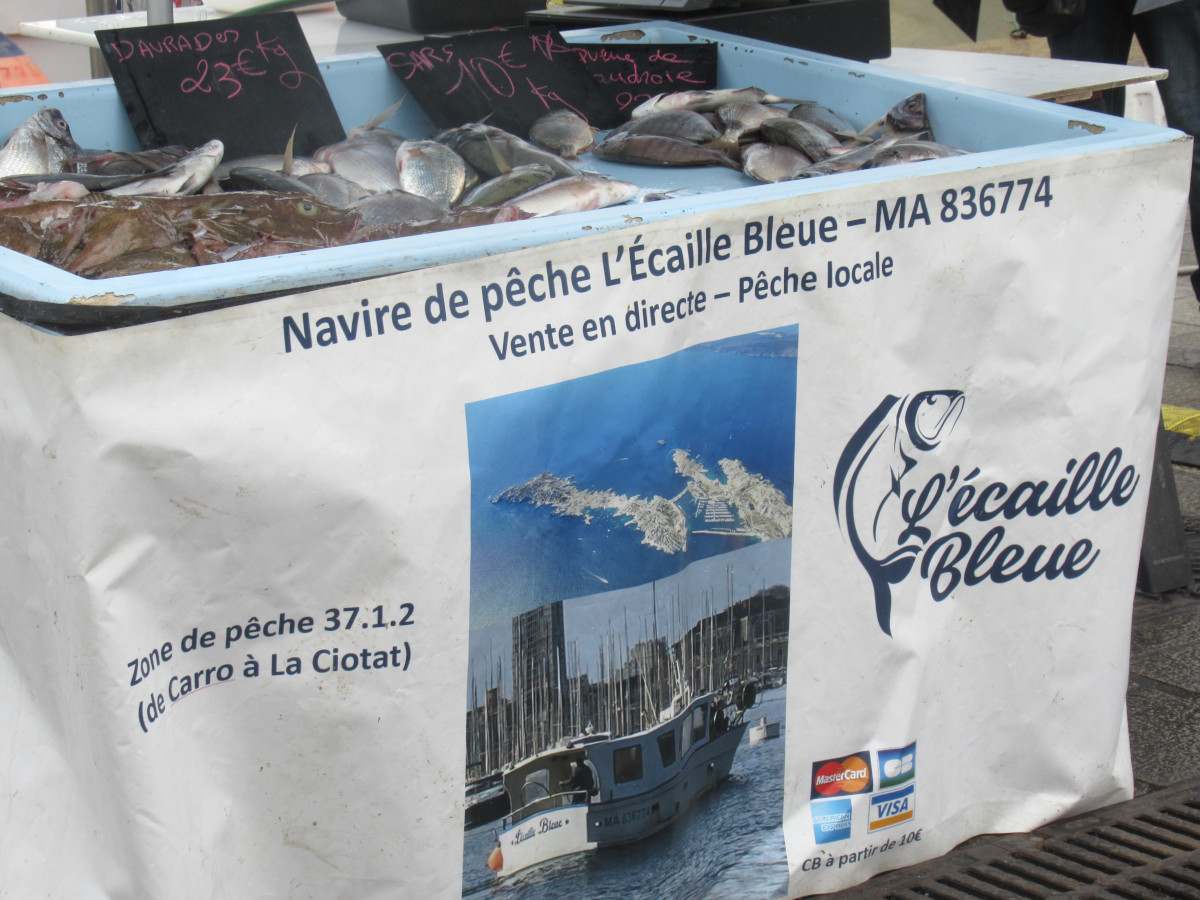
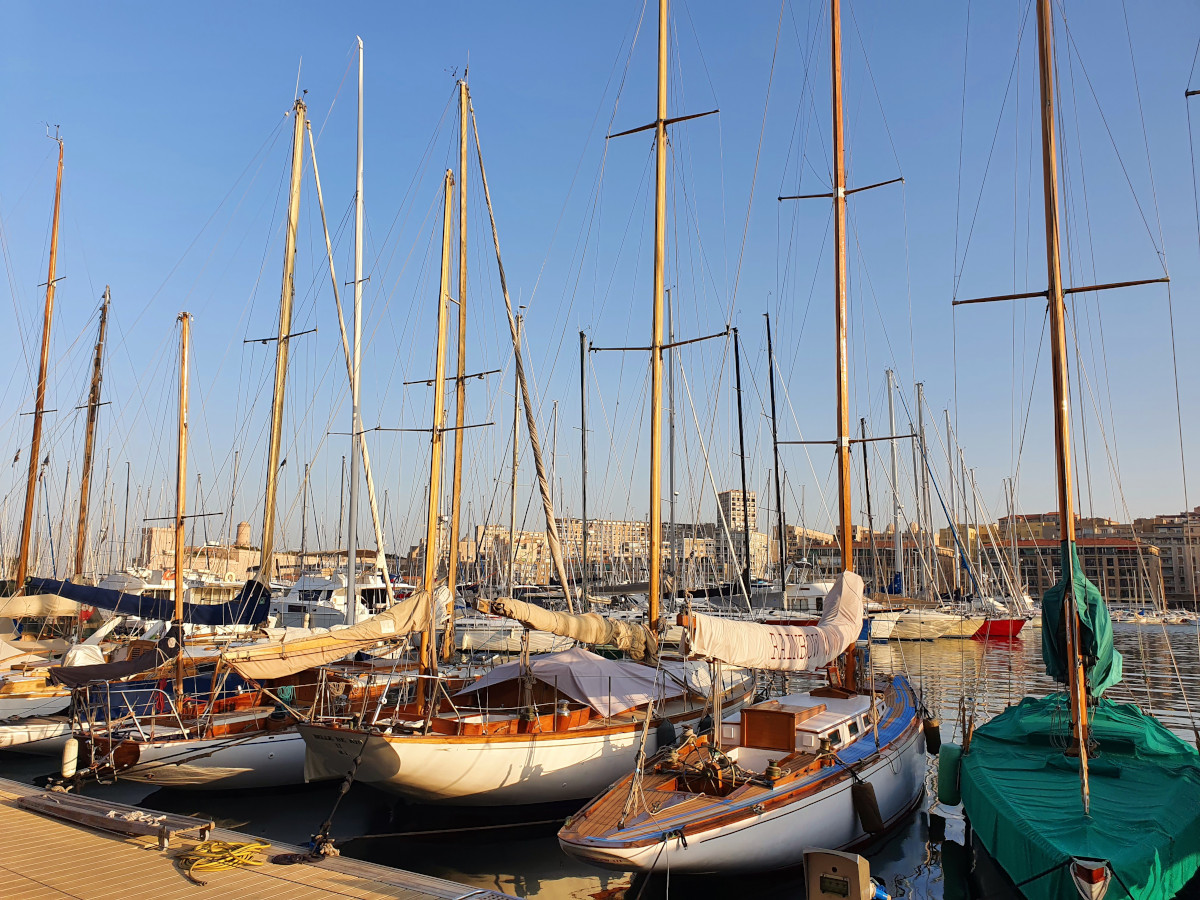
Today the Old Port (or ‘Vieux Port’) is the social and cultural centre of the city. Take the time to wander down both sides of the harbour and maybe to cross it on the little ferry which goes back and forth all day. The water will be crowded with pleasure boats and in the mornings there’s a fish market on the quayside. Bars and restaurants spill down both sides. People gather too under the giant canopy, to chat or listen to buskers, perhaps watch a major sports event on a giant screen. It’s definitely a place to linger and it’s one of the city’s most photogenic spots. Here’s a rundown of the places you might keep an eye out for.
The fish market operates in the mornings, from about 8.00am–1.00pm. It’s quite small, but sells a huge range of fish caught overnight. The catch varies according to the weather and the season, but you may well see whiting, red mullet, sardines, sea bream, sole, mackerel or monkfish. Look out for the ‘Eye of Venus’, or ‘Œil de Sainte-Lucie’ in French, an orange shellfish, flat on one side and curved on the other, whose markings make it look like an eye. People wear them as good-luck pendants.
harbourside sights
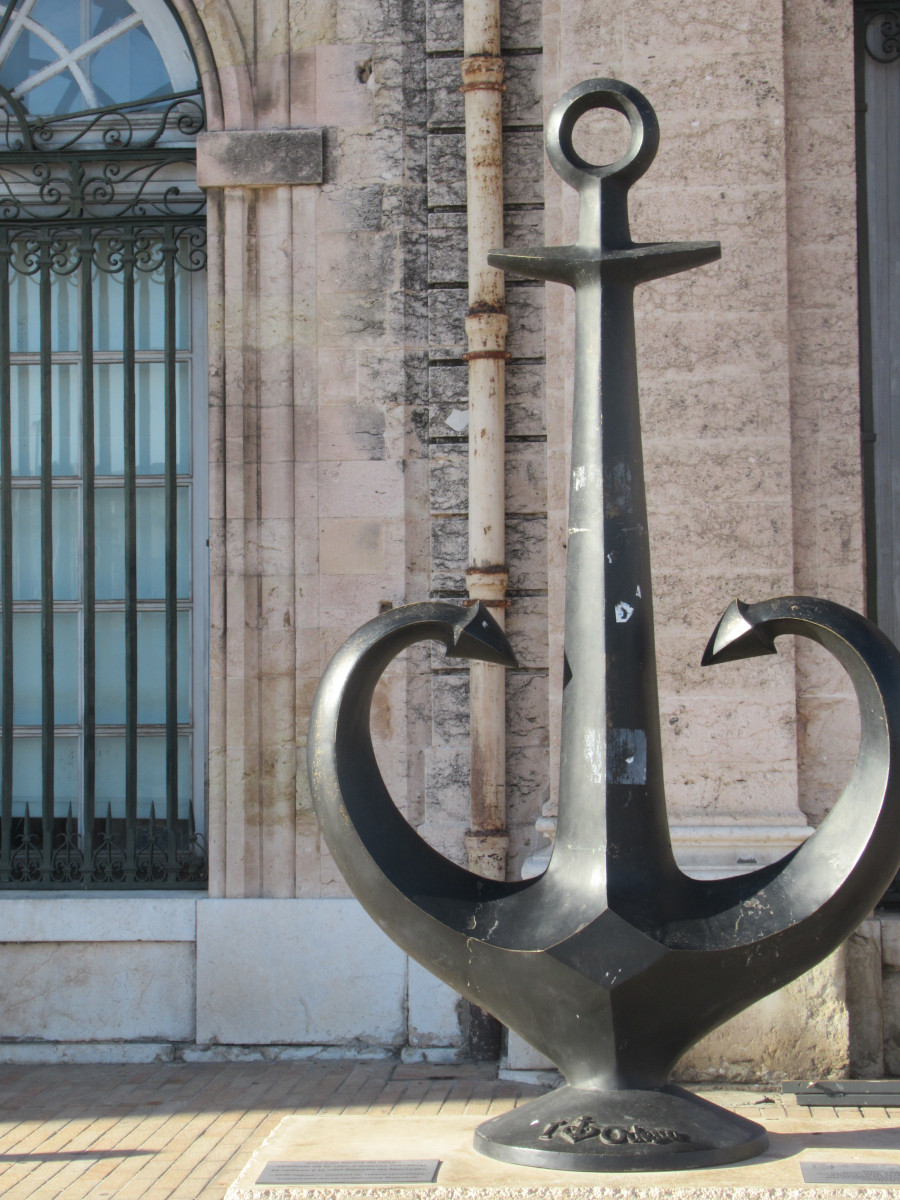
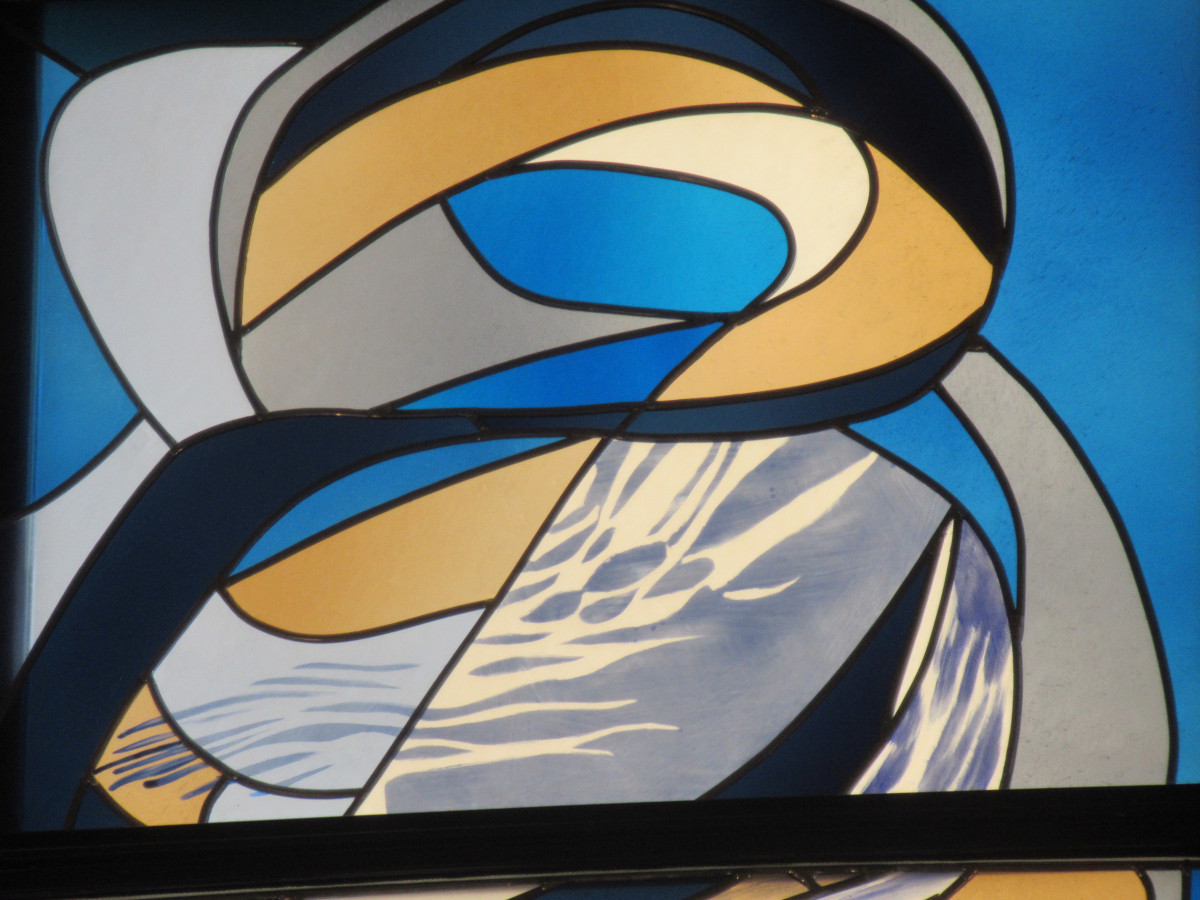
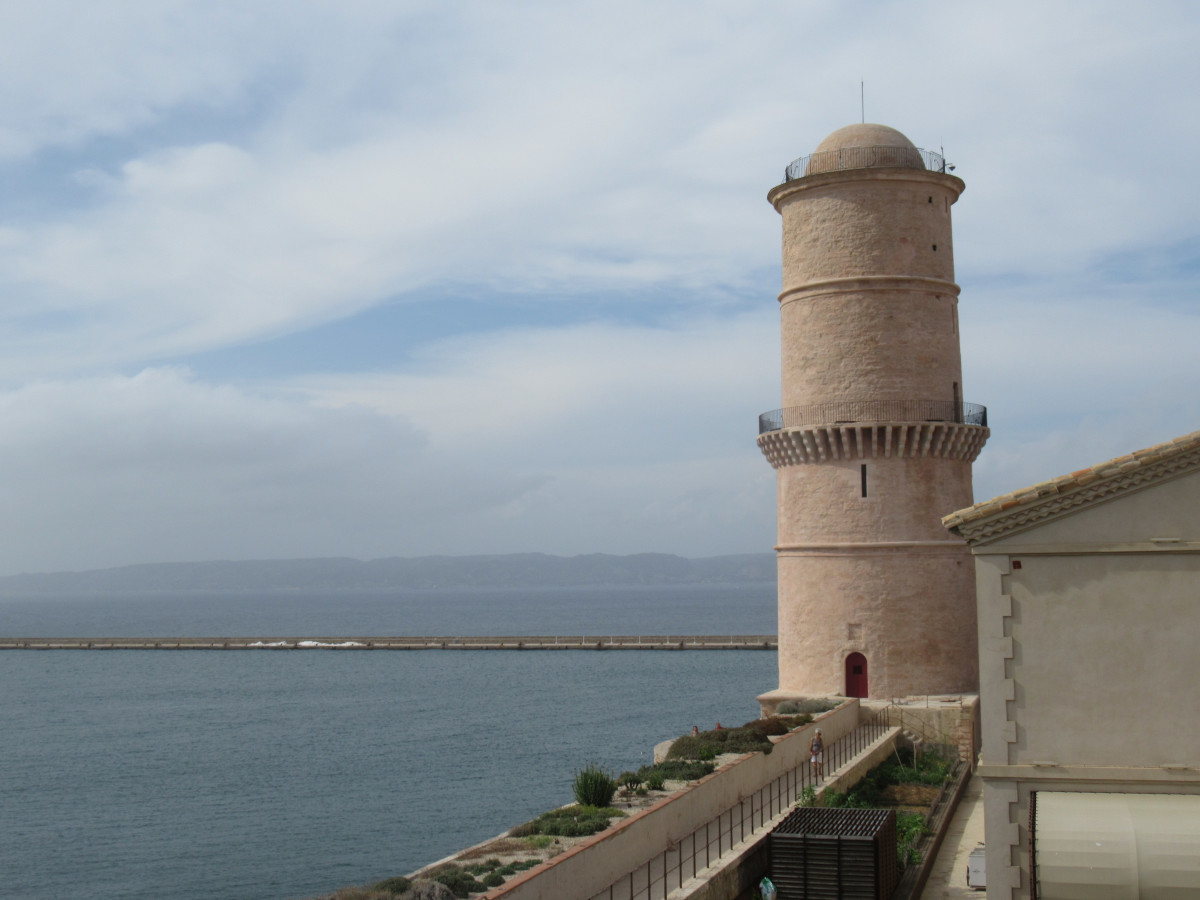
Opposite the fish market is St Ferréol Church, built on a site first consecrated in the 5th century and inside is some unexpectedly modern stained glass on a ‘wind and waves’ theme. Just down the northern edge of the harbour is the City Hall (‘la Mairie’), with Louis XIV’s head on the façade and a heart-shaped anchor on display outside. A plaque reads ‘This heart-shaped anchor is the symbol of the city of Odessa in Ukraine, given as a gift to its twin city of Marseille’ A second plaque was placed there by the Mayor of Marseille in March 2022 in ‘solidarity with the people of Ukraine and Odessa’ following the Russian invasion of their country.
The Saint-Jean Fort dominates the southern entrance to the harbour. It was built in the 12th century for the Hospitaliers of Saint John of Jerusalem, many of whom left for the Holy Land from there. It included a chapel, a church, a hospital and the Commander’s palace. The ‘Tour Ronde’ (Round Tower) was added later to serve as a watchtower and a guide for shipping. The Hospitaliers were expelled by Louis XIV who wanted the site for military purposes and it was used as a state prison until the revolution. During World War II the Germans took it over as an ammunitions depot and built a field hospital block below, which is today the Deportation Memorial (See Episode 2)
Today, the Saint Jean Fort is one of Marseille’s most visited monuments, both because of its interesting history and for the wonderful views you get of the harbour and into the distance over the sea.
the canopy

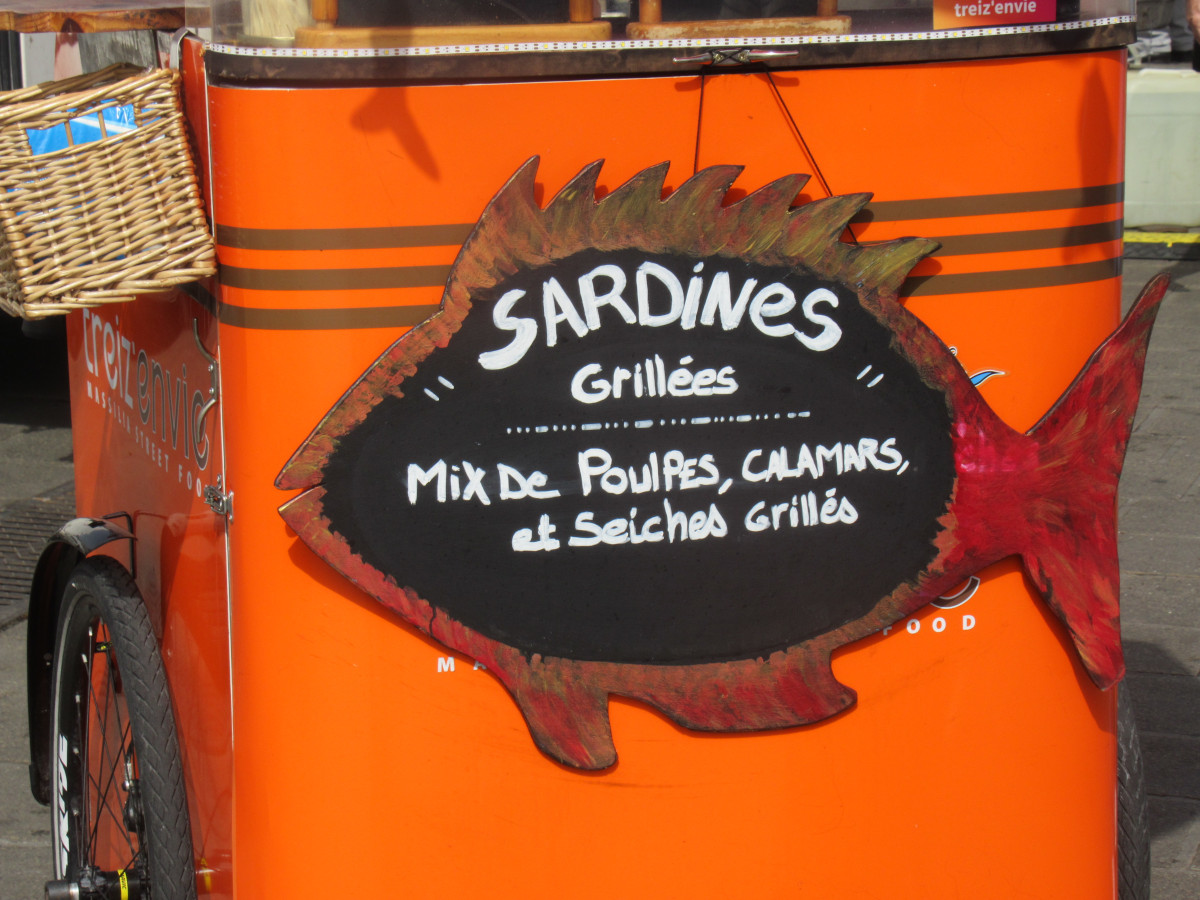
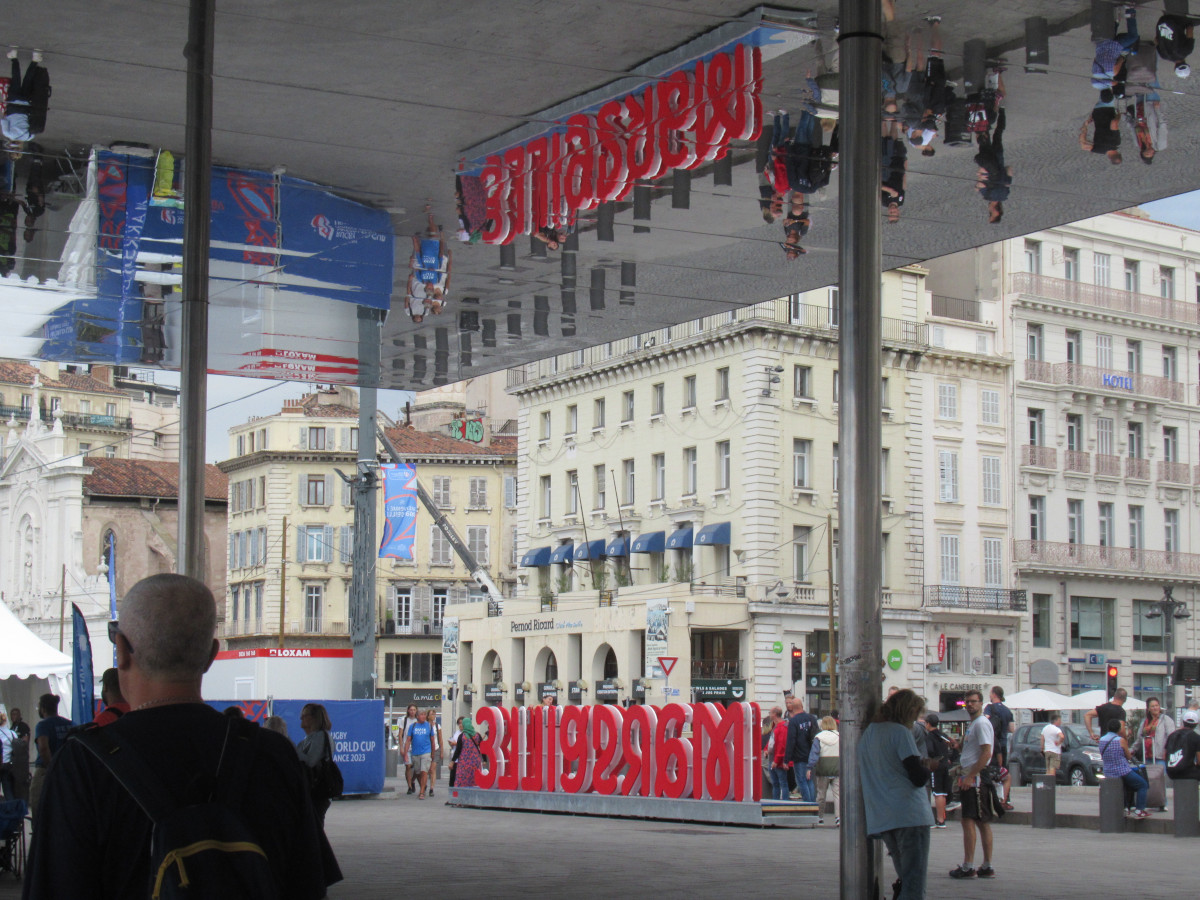
The stainless steel ‘mirrored roof’ which sits on 8 slender columns above the harbourside is one of Marseille’s talking points. It was designed by Sir Norman Foster to mark Marseille’s year as European Capital of Culture in 2013. The idea was to open up the space and act, as the architects put it, ‘as an invitation to the people of Marseille to enjoy and use this grand space for events, markets and celebrations once again.’ Wander through it, enjoy the reflections of the sky, the sea and passing boats or buses, stop to buy flowers or a snack, to listen to buskers or, sometimes at least, to watch something on a giant screen.
the canebiere
The Canebière is Marseille’s central avenue and leads back into the city from the Old Port. Its name comes from the provençal word for hemp (or cannabis), which used to grow here and was used to produce ropes for shipping. In the 19th century, this wide, elegant road was full of luxury hotels and grand cafes. Key sights include the Chamber of Commerce and, just off the Canebière, the Opéra. Maybe it’s lost a little of its grandeur, but glance up and you will notice many once-magnificent mansions along both sides, reminders of the avenue’s former glory.
If you walk a few minutes up the Canebière, you will come to the Noailles district, known for its extremely lively and colourful market and to the Cours Julien, a square full of street art, graffiti and any number of restaurants serving cuisines from around the globe. A little further comes the Boulevard Longchamp, dominated by the Palais Longchamp, a majestic monument built in the 1830s to celebrate the completion of a canal bringing clean drinking water to Marseille. At its grand entrance are ornamental steps and fountains, inside are the city’s Natural History and Fine Arts Museums (see Episode 6) and at the back is a lovely, statue-filled garden which is free to visit.
notre dame de la garde
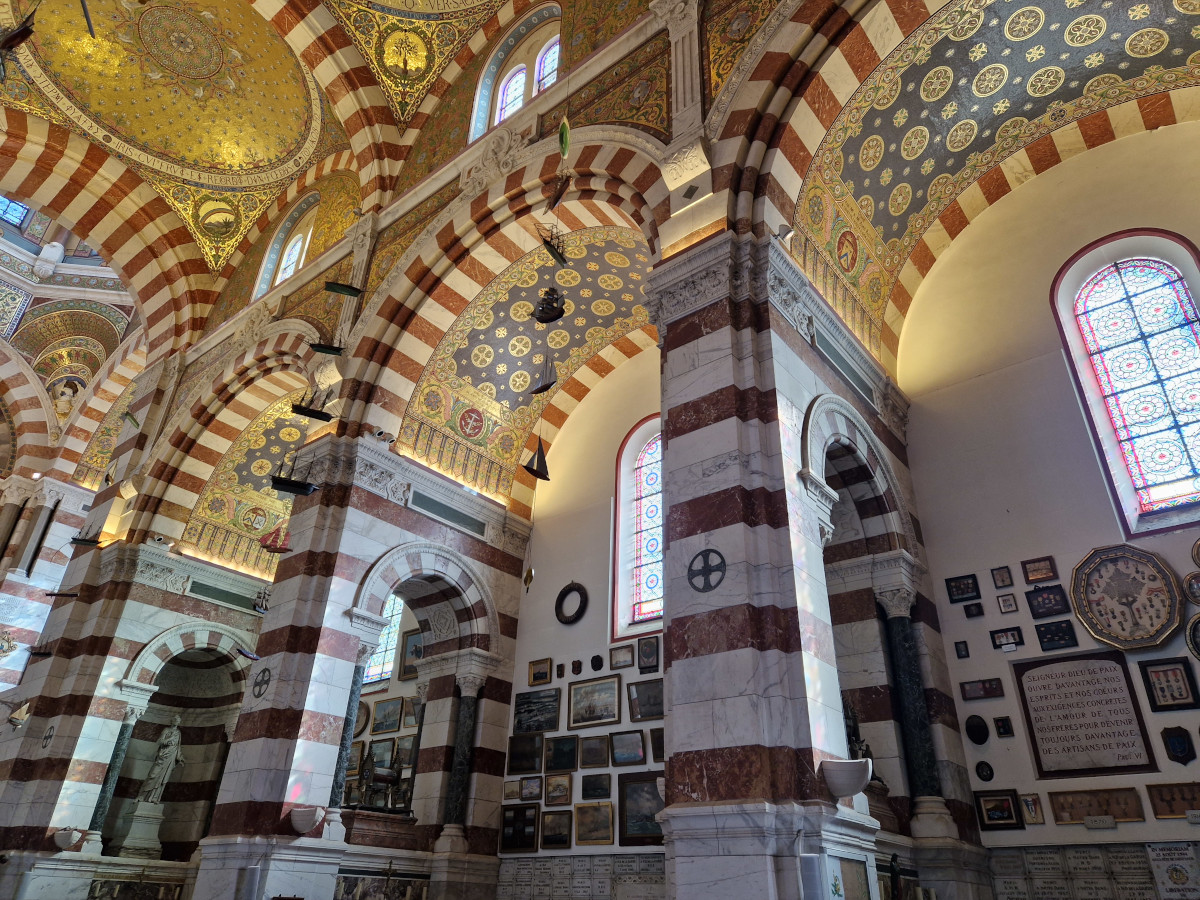
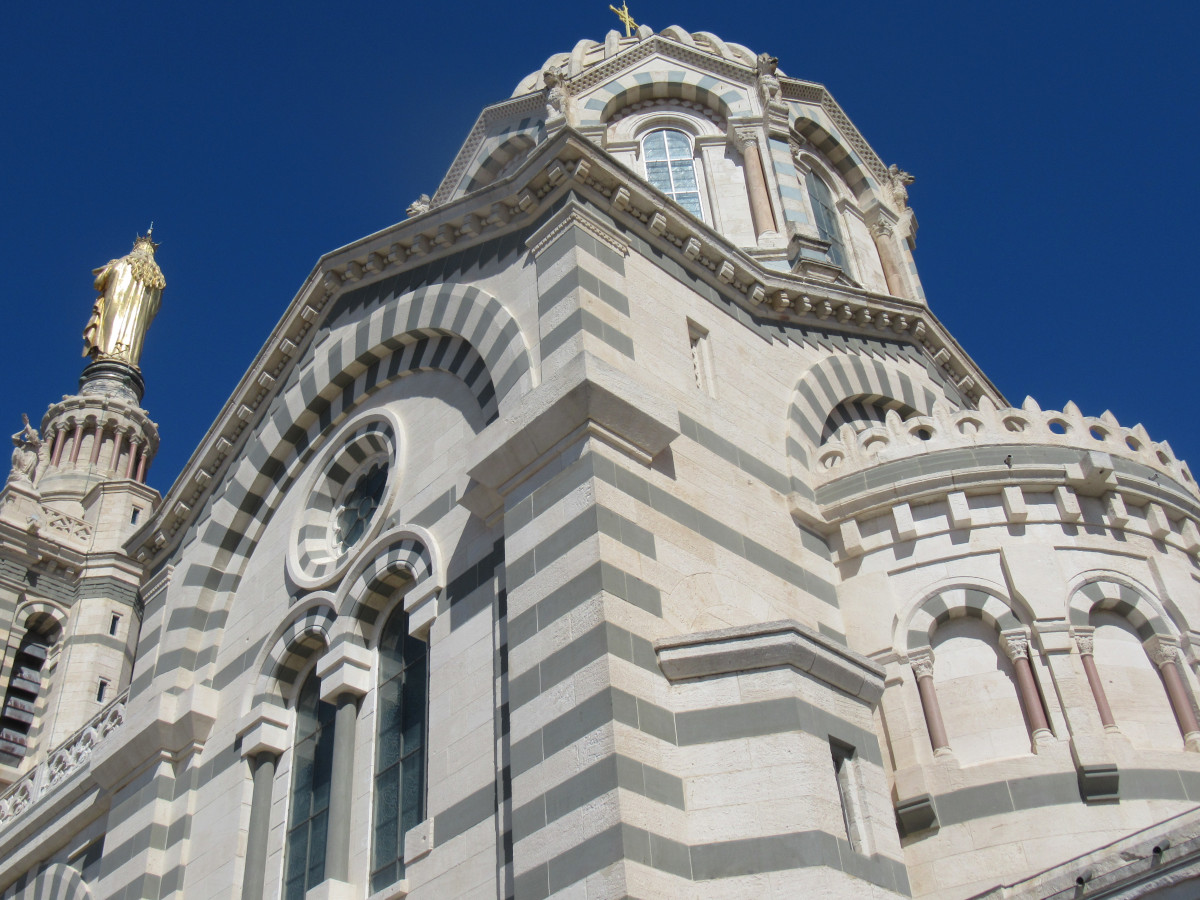
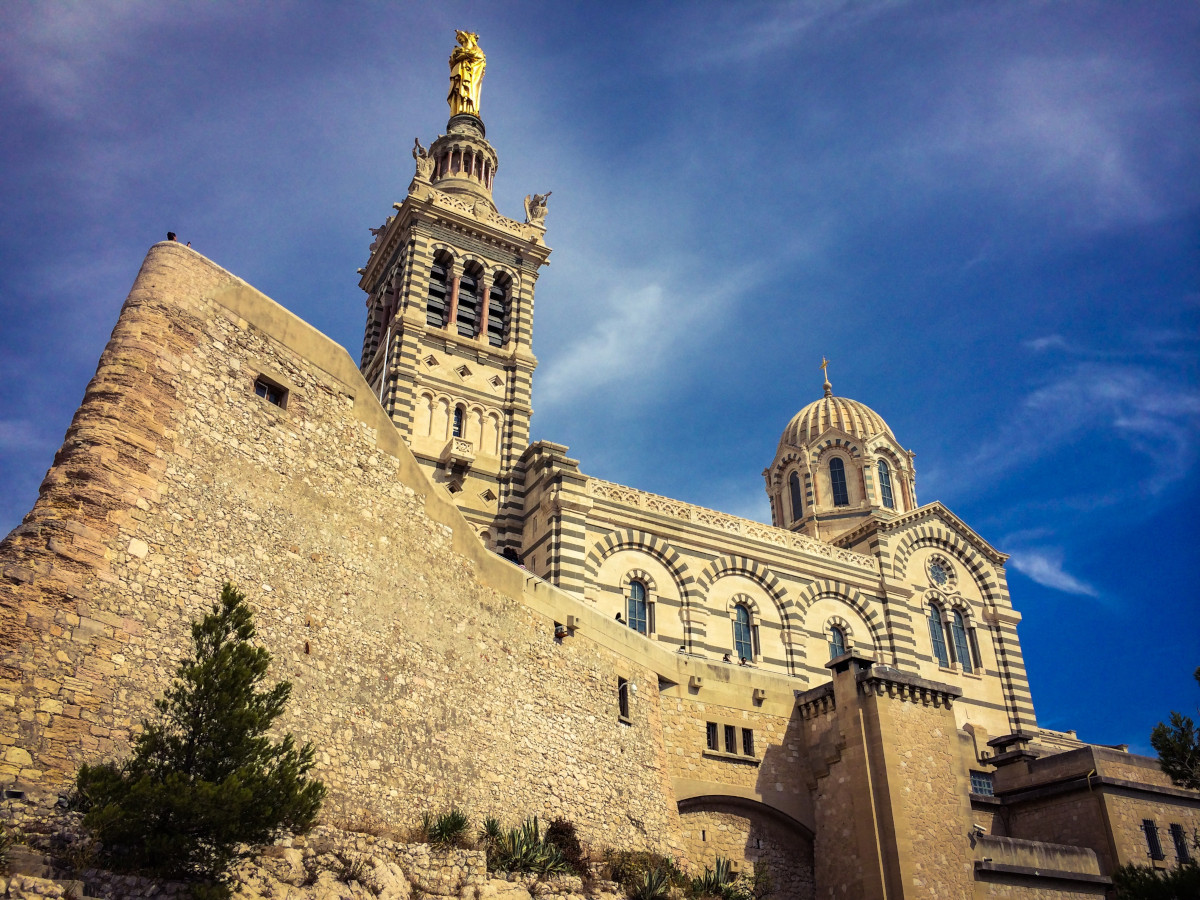
Le Petit Train (tourist train) leaves the Old Port near the City Hall. There are two routes – one up to the Le Panier district (see next episode) and one to Notre Dame de la Garde, a trip which will save you the 45 minute uphill walking route signposted from the southern side of the harbour. Notre Dame, also known as ‘la Bonne Mère’ (the Good Mother) sits on the highest point above Marseille and is, as the tourist office website puts it ‘an emblem of the city of Marseille, watching over sailors, fishermen and all the people of Marseille.’
There was a sanctuary on the site in the 13th century, dedicated to the Virgin Mary, and it was enlarged by King Francis I in the 16th century – look out for his salamander emblem over the North Porch. Stories of visits by both Francis I and Louis XIII are told on the podcast. The grim tale of how the church was mocked and damaged in the revolution is also recounted, including the wrapping of the Virgin in a ‘tricolore’ scarf and the theft and destruction of many of its treasures.
In the 19th century, as Marseille grew prosperous, it was decided that a new church was needed and so the Romano-byzantine beauty which you can visit today was built. It is spectacular, inside and out. The enormous gilded copper statue of Mary placed on top of the bell tower symbolises the city. Inside, it is a riot of colour: dazzling mosaics formed from 12 million tiny tiles, gold and many colours of marble, and a host of ‘votifs’, prayers and messages of thanks, many of them from sailors. It’s a must-see and so too are the splendid views from around the grounds. You can survey the whole of Marseille and its coastline, including the Frioul Islands and the Château d’If.
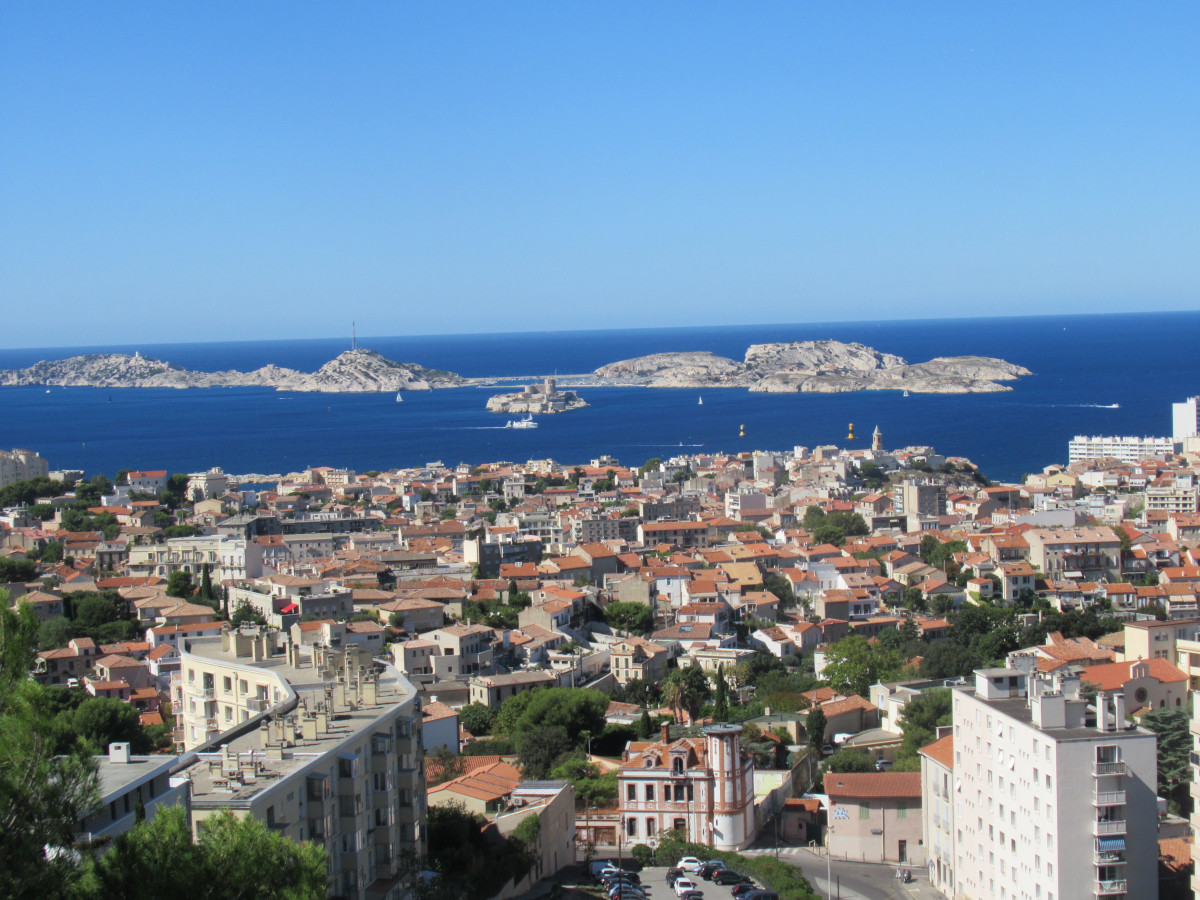


Another reminder of the church’s importance to the city are the plaques on the outside walls commemorating the liberation of Marseille in August 1944. The last battle was fought up here and bullet holes remain in the walls to prove it. One sign underlines how it was here that the city was finally delivered from German occupation: ‘On 25th August, 1944, on the Feast of St Louis, King of France, and the days which followed, Notre Dame de la Garde managed to prevent the destruction of the church and liberated the town and the whole region.’
The trip back down to the city centre, whether you walk or take the ‘petit train’, will give you glimpses of this more prosperous side of Marseille, with its large houses, pretty gardens and wonderful views. You may catch a glimpse of the Palais du Pharo, built for Napoleon III not long before his empire collapsed and used today as a conference centre. You will certainly see the beautiful coastline, the corniche, admired by a character from a Jean-Claude Izzo novel: ‘He could see out over the harbour. The whole sweep of it from l’Estaque to Pointe-Rouge, with the Frioul Islands and the Château d’If. Marseille in Cinemascope. Beautiful.’
Listen to the podcast
reading suggestions
The Wicked City The Many Cultures of Marseille by Nicholas Hewitt
Marseille Port to Port by William Kornblum
Total Chaos by Jean-Claude Izzo
links for this post
The Saint Jean Fort
Deportation Memorial
The Petit Train
Notre Dame de la Garde
Boat trips from the Old Port
Previous Episode 10 Places to Find History in Marseille
Next Episode The Le Panier District
Last Updated on January 30, 2025 by Marian Jones

